Share the post "Feature: GRTR!@20 Anniversary – Blues and Blues Rock – Primer"
They say “popular” music goes in cycles and fifteen years after the latest blues/rock revival spearheaded by the likes of Jeff Healey and Gary Moore, the genre received a boost from the arrival of Joe Bonamassa, especially in Europe which nurtured a booming blues scene in its own right.
Pete Feenstra is a veteran of both music promotion and writing. In the 1990s he published the magazine ‘Real Music’ whilst promoting gigs at Shepherd’s Bush Empire and the Mean Fiddler venues in London and subsequently creating his own residencies at the Boom Boom Club in Sutton (Surrey) and the Beaverwood Club, Chislehurst (Kent). He has promoted many of the artists he writes about. Over the years he has authored sleeve notes and reviews, chiefly for Get Ready to ROCK! but also for the sometime print Blues magazine (part of the Future Publishing stable) and ‘Blues In Britain’.
Pete has a parallel life as a lyricist and has been collaborating with various musicians including Black Pearl (with Marcus Malone and Muddy Manninen), Voodoo Ramble, Mick Pini & Audio 54, Feenstra And Simpson, Marcus Flynn and Zed Mitchell.
Here Pete gives us his personal appraisal of two decades of blues/blues rock and provides an essential primer for those needing to find out more, or fill in the gaps…
(Those artists highlighted appear in Pete’s “Best of 2003-2023″ selections Listen in to Pete’s “Best of” (Part 1) first broadcast on Get Ready to ROCK! Radio on 9 April 2023):
It’s a measure of the blues rock genre’s role as a catalyst to a wide ranging number of offshoots, that when we look back at the last 20 years, there’s a huge amount to draw on.
Think no further than the durability of title track of the recently re-issued ‘The Healer’ by John Lee Hooker and Carlos Santana, which continues to sit comfortably with the rock-blues fraternity.
In more contemporary terms, there’s still room for crossover roots artists like Fantastic Negrito, Yerba Buena, Vintage Caravan, the gospel tinged Castro Coleman, aka Mr Sipp, (“The Mississpi Blues Child”) or indeed Mick Pini and Audio 54′s experiments with dub blues. These are all examples of innovations with an immediacy and integrity derived from their blues roots connections.
Below you’ll find a selective list (apologies to those I overlooked) of blues-rock artists that suggest the genre has never been in better health.
I would argue that while that is the case in terms of creativity and output, the elephant in the room continues to be the ageing demographic of the fans and consumers.
Let’s look at the positives first. In the UK alone, there is a raft of exciting new talent spanning artists such as Emma Wilson, Ritchie Dave Porter & Debra Susan, Kyla Brox, Connor Selby, Elles Bailey, The Cinelli Brothers, Troy Redfern (pictured), King King, Mike Ross, Wille & The Bandits, Mississippi McDonald, Kriss Barras, Laurence Jones, Krissy Matthews, Oli Brown, Adam Norsworthy, Dom Martin, Jack J. Hutchinson, Bad Luck Friday, Sean Taylor, Virgil (& The Accelerators), Danny Giles, Catfish, Rivers Meet etc. Apologies for lots that I have missed.
Then there’s more established contemporaries like Ian Siegal, Aynsley Lister, Ian Parker, Rebecca Downes, The Nimmo Brothers (aka King King), Vince Flatts Final Drive and Ben Poole etc
 Photo: David Randall/GRTR!
Photo: David Randall/GRTR!
Across the Atlantic the current generation of American and Canadian bands is arguably as good as it’s ever been, a roster that includes Robert Jon & The Wreck, The Cold Stares, Dylan Triplett, Eddie 9V, Samantha Fish, Larkin Poe, Tommy Castro, Jason Ricci, Whitney Shay, Christone “Kingfish” Ingram, Mike Zito, Ally Venable (pictured), Ruthie Foster, Gary Clark Jr., Jontavious Willis, Albert Castilia, Shemekia Copeland, Toronzo Cannon, Sugaray Rayford, Joe Louis Walker, Tinsley Ellis, Warren Haynes, Tedeschi Trucks Band, Vanessa Collier, Albert Cummings, Danielle Nicole, Tas Cru, Carolyn Wonderland, Coco Montoya, Larry McCray, Walter Trout, Kat Riggins, Kenny Wayne Shepherd, Janiva Magness, Eliza Neals, Selwyn Birchwood, Eric Gales, Sonny Landreth, Dennis Jones and many more.
The above list sets an incredible standard, but with a few notable exceptions, most are very reliant of European festivals to survive and are playing to an ageing audience.
Two things strike me as relevant to the current rock blues scene. Firstly there’s a demographic problem meaning that some practitioners are sometimes 25 years younger than their fans.
Secondly when looking back on the last 20 years the thing that strikes me is that (putting Brexit aside and pre-Covid), the domestic blues-rock scene missed a big opportunity in not forging stronger links with our European musical partners.
Consider this, while the American blues scene has slumbered into post middle age and congratulates itself on a musical heritage that is ever more removed for our day to day reality, the European version of the blues has flourished and embraced a wider musical perspective, but failed to market itself confidently enough to become a credible alternative
Think about it, when the Brit-Blues Boom changed the world, no-one was embarrassed by the riches we exported.
Fast forward several decades and the more discerning rock blues fan might very well be listening to Denmark’s Thorbjorn Risager & The Black Tornado, Blues Pills, Finland’s Erja Lyytinen Band, and Micke Bjorkloff & Blue Strip, Swedish guitarist Patrik Jansson, Italy’s ace harp player Fabrizio Poggi, Croatia’s Voodoo Ramble with Boris Zamba, the harp playing Tomislave Goluban and startling vocalist Ivana Galic.
There is also Germany’s Kai Strauss, the mellifluous tone of Zed Mitchell and Henrik Freischlader, Spain’s Javier Vargas, Susan Santos and the award winning The Travellin’ Brothers, Norwegian pianist Reidar Larson and vocalist Noora Noor, though she doesn’t seem to have done much lately and not forgetting Austria’s Meena Cryle.
And still there’s more with Holland’s Julian Sas, the boogie King Rob Orlemans, and the Dutch based Canadian export Layla Zoe (pictured) and Belgium’s The Blues Bones, Joost De Laan Band or Ghalia Volt and France’s Awek Blues Band or French harp players like Jean Jacque Milteau, Blues Boy Benoit or Nico Wayne Toussaint and the soul blues of Malted Milk.
The point is: the musical standard and level of innovation is way above much of the cannon fodder we promoters (recently retired) are offered at club level.
But rather than embrace all the various related European musical strands and come together as a meaningful musical block, too much time is still being wasted on genres, labels and the like, while almost having a uncritical appreciation of all things American.
This is not meant to be an anti American blues rant by the way, though the one way traffic in terms of importing music really rankles.
One very significant example of what I’m talking about, is when a European blues cruise ends up being populated by a number of American bands many people haven’t even heard of and something tells you it’s the lamentable triumph of agents over talent.
Rant over and onwards and upwards.
This overview is then a rallying call for home grown talent in desperate need of marketing, and an overview of some of the musical highlights (both recorded and live) that we’ve enjoyed over the last 20 years.
Blues remains an essential American heritage, but its survival is wholly dependent on it being a catalyst for new possibilities, as evidenced all those years ago by the Stones, and now by groundbreaking European artists such as Erja Lyytinen, and Thorbjorn Risager, and British bands such as Aynsley Lister, Ian Parker and Elles Bailey (pictured) who have put songwriting at the core of what they do.
It’s only with the benefit of hindsight that you can sometimes pick out significant changes in a music scene. The blues-rock scene is notable for plenty of false dawns as muh as the more obvious successful ones.
But let’s go back to 2003, a year when at the commercial level of things, The White Stripes and Black Keys were hot potatoes, while in the British clubs the old guard rock-blues fraternity consisted of bands like Otis Grand, The Blues Band, Stan Webb’s Chicken Shack, the ever popular Hamsters, Mick Clarke, Blues N’ Trouble, Mick Pini, Eddie Martin (in both band and solo mode), Tony McPhee’s Groundhogs, Mick Taylor, Nine Below Zero, Robby McIntosh, Norman Beaker, Connie Lush Ruthless Blues and even the resurrected The Yardbirds (with their all star ‘Birdland’ album).
Meanwhile, the up and coming Ian Parker signed with Ruf Records to chart his own course.
Leicester’s ‘king of tone’ Mick Pini had decamped to Germany at the end of the 90′s and re-emerged with a superb album called ‘Blues Survivor’, with highlights such as the title track, ‘Is It Me, Is It You’ and ‘Careless’ which he reprised with Audio 54 last year.
Sadly a lack of distribution meant it made little inroads into the UK market.
And what of such forgotten American tour acts such as Chicago’s Motor City Josh, the late harmonica ace Paul Orta, Florida’s Jimmy Griswold, with his Albert Collins staccato style, and the understated Texas guitarist Paul Byrd? All good players but good examples of long forgotten under appreciated talents.
Domestically Aynsley Lister (pictured) continued his steady rise, becoming an established songwriter to match his excellent guitar chops, while the hugely infectious Motel Kings continued to provide hi-octane rhythm and blues, and even made it to the Dutch festival circuit.
On refection it was 2005 (for reasons unknown) that kick started a booming blues rock scene, though even the best laid plans didn’t always work.
At the club level by 2005 the enduring Walter Trout was already thanking his fans for his 13 year solo career on a compilation album called Deep Trout, while Joe Bonamassa was just about to make his move on what was then a healthy UK club circuit.
Hard to imagine now, that a last minute arranged London debut in Tooting, drew about 75 people, a crowd which he doubled a week later.
His ‘Blues Deluxe’ album set the standard for blistering guitar work and the will to succeed.
Trout on the other hand seemed to make a smooth transition from being in John Mayall’s Blues Breakers to his well supported solo career, though finding a meaningful record contract initially proved far harder than pulling in his adoring fans.
The Imperial Crowns for example, seemed destined to break the mould with Jimmy Wood’s voodoo jive and impressive harp, tempered by JJ Holiday’s steely licks over a killer rhythm section.
And yet after an impressive debut album ‘Hymn Book’ full of dark imagery with tales of sex, death, voodoo, Hollywood and beyond, they somehow fell away, though they continued to work their socks off in Europe.
Savoy Brown co-founder member John O’Leary’s Sugar Kane featuring Jools Fothergill on guitar were all over the UK blues scene, mainly on the back of his 2004 Chicago styled ‘Sins’ album, on which O’Leary rekindled the classic Paul Butterfield style harp attack.
As a promoter, I was never busier with a healthy raft of tour bands particularly at Beards Blues, a small blues club in Tooting. Bands included the effervescent Carvin Jones and the big impact Texas style of Rocky Athas with vocalist the late Larry Samford. Their 2003 ‘Miracle’ album was everything that you would hope it could be.
Former New Orleans cab driver Mem Shannon brought cool funk on deeply wrought songs to London town, while Michael Hill provided social commentary, a fine vocal and effortless guitar chops.

Photo: Paul Rodgers
Both Studebaker John and Mojo Buford brought blues authenticity to match a musical style limited by their choice of material. An while Joe B made his London debut there with a brace of gigs, it was the hypnotic vamp blues of Otis Taylor that provided both a sell out and one of the most original blues shows in recent memory.
Taylor was a revelation, stripping things down to his low baritone growl over echo reverb accompaniment. Truly mesmerising and a good example of pushing the blues into a new direction.
Candye Kane signed with Ruf Records to pull no punches on the raunchy White Trash Girl album, though sadly the only UK show she ever made was at my Bottom Line venue in Shepherds Bush in the middle of a transport strike, performing to a small crowd of die-hards.

Las Vegas based power trio Stoney Curtis Band rekindled the flame of psychedelic rock blues with some intense shows full of piercing riffs, and jammed out grooves from a killer album significantly called Acid Blues Experience, which I actually love twice as much now as then.
I seem to remember 3 gigs with the original line-up of bassist Colby Smith, drummer Charles Glover 11 and Stoney’s lead guitar work were probably on a par with the younger Robin Trower all those years ago.
As an aside, it probably wasn’t until the latter’s 2007 ‘What Lies Beneath’ that a more mature Trower re-found his UK audience with the ethereal and deeply soulful set big on feel and tone.
And to round off an interesting year you can’t ignore the great John Mayer. He may too often have a keen focus on commercial possibilities, but his ‘ Try’ – John Mayer Trio Live In Concert’ (with Pino Palladino and Steve Jordan) is the stuff of a great power trio, even with the annoying crowd noises.
Suddenly by 2006 more labels started investing in blues, notably Ruf Records, who looked to the future with the likes of Ian Parker, Aynsley Lister and Erja Lyytinen, a triumvirate who combined impressively to become the 2006 Blues Caravan.
Parker it was, who on signing with Ruf Records with the album ‘Inside’, rethought the whole approach of blues-rock, by turning his back on his previous musical direction to pen the deeply introspective songs. He followed it up with the similar insular feel of Whilst The Wind, which did well for him.
Perhaps he was 20 years ahead of a time that now determines singer songwriters are the corner stone much contemporary commercial success?

Photo: David Randall/GRTR!
Erja Lyytinen (pictured) has since impressively built a European tour circuit of her own, with a mix of rock, blues and prog with lashings of slide and on stage spectacle. If nothing else, the nascent Finnish reality TV star showed what can be done when like Parker you venture beyond the usual confines of the blues rock genre.
Ruf also released a classic Omar & The Howlers album ‘Muddy Springs Road’. Omar had the voice to match his stinging guitar style, but never managed to emulate his late 80′s ‘Hard Times In The Land Of Plenty’ commercial peak.
Eric Bibb’s 2006 Diamond Days album was a timely reminder of an artist whose song craft and emotive phrasing took the blues back to its roots but in a contemporary crossover way.
 The same year saw Walter Trout’s all star Full Circle album with the likes of Jeff Healey, Joe B, Bernard Allison, Guitar Shorty and John Mayall finally gave him a number one hit album.
The same year saw Walter Trout’s all star Full Circle album with the likes of Jeff Healey, Joe B, Bernard Allison, Guitar Shorty and John Mayall finally gave him a number one hit album.
We should also have taken notice of Trout’s tour supports, one of whom Oli Brown was just about to kick start a career that took him into the vanguard of rock blues, before in later years embracing hard rock and metal.
Michael Katon made a comeback after a four year absence with his growling Detroit boogie being undiminished with the passing of time.

2007 saw Scotland’s underrated The Nimmo Brothers come up trumps with their Picking Up The Pieces album, full of strong material and great playing, delivered with the kind of bluster that Alan Nimmo later took into the very popular King King.
By 2008 rock became more significant in the blues-rock world, as Del Bromham’s Stray Valhalla album proved to be one of his best ever, while across the Atlantic the all star Chickenfoot delivered a belter of a self titled debut album.
Curiously the larger than life Popa Chubby, who initially had a stop-start career in the UK, put more emphasis on rock more than blues in his live shows, while promoting an album called ‘Vicious Country’.
The very dependable rhythm and blues kings Nine Below Zero, also delivered with a song driven album, significantly called It’s Never Too Late.
The Nimmo Brothers temporarily split (they reunited for a very successful show some years later) and guitar/vocalist Alan Nimmo formed King King with bassist Lindsay Coulson to make their recorded debut with the ‘Broken Heal’ EP.
It was the musical equivalent of a trickle that would soon turn into a torrent.
Former latter day Blues Breaker Buddy Whittington continued to established his classy Texas style blues on the club circuit .
2009 saw the rise of Joanne Shaw Taylor (pictured) with her White Sugar album, which I said at the time, found: “A balance between Joanne’s fiery playing, her brooding sensuality and occasional funky groove.”
She also teamed up with Virgil And The Accelerators to great effect, while the later addition of Oli Brown heralded a new generation of rock blues icons.
A very young Virgil showed raw promise with a debut EP called ‘And So It Begins’ before signing with Mystic Records.
2010 was another one of those significant years. Firstly, The Hoax reformed for a one off UK show at Dingwalls which was everything we hoped it would be.

The year also announced the arrived of Indianapolis funky blues rocker W.T. Feaster and his debut Wish You Well album.
Two years later he went on to become an integral part of the ‘New Generation Blues’ tour with Virgil And The Accelerators and Mitch Laddie. It was a great bill that promised so much and delivered a lot musically, but didn’t quite lead to individual success.
Surprisingly perhaps, former Purple bassist Glenn Hughes successfully teamed up with Joe Bonamassa for an impressive Black Country Communion debut abum, albeit the ghost of Zeppelin weighed heavily on the project.
It was round about this time I started to notice the disparity in years between some of the up and coming bands the their audience, while BCC set a retro trend by dipping into classic rock back catalogue and Hughes’s early career Trapeze.
Beth Hart (pictured) hit base with her My California album, on which a consistent production superbly showcased her earthy vibrato. Her appearance at the Shepherd’s Bush Empire was that of artist on the up escalator.
Gary Clarke Jnr. announced himself as new major talent on the rock blues scene at the 2010 Clapton Crossroads Guitar festival, with real presence, charisma, musical chops and a fluid style that Robert Cray fans could relate too.
Also on the bill was competition winner Ryan McGarvey.
American brother and sister Noni and Austen Crow played a handful of startlingly good gigs with their band Stone Electric whose brand of psychedelic tinged Janis Joplin inspired psychedelic rock blues, gained them lost of fans.
Not before time, Larry Miller finally found a big festival crowd for his high octane guitar crunching rock-blues, well captured on his Unfinished Business album, while Chantel McGregor continued to add to her string of incredible live shows.
Slow burners the Billy Walton Band from New Jersey and Germany’s introspective Henrick Frieslader were waiting in the wings and built up their respective crowds with hard gigging.

Photo: Phil Honley
2011 saw swampy Florida outfit JJ Grey and Mofro make a memorable debut Boom Boom Club gig in Sutton, while Virgil And The Accelerators fulfilled all their young promise of their debut album on Mystic called The Radium.
The completely unique Chantel McGregor (pictured) finally cut her awaited and aptly titled debut called Like No Other. It featured fine playing and singing, but hinted at an uncertain musical direction, which was not resolved until the very impressive ‘Lose Control’ four years later.
The high profile ‘High Voltage’ festival proved to be a significant landmark for the blues rock genre, with older rather than younger bands and audience.

Warren Haynes solo album Man In Motion provided the template for a decade of nouveau soul movement that was to follow in the States.
The little known Dave Jackson Band chipped away on the circuit and they were an exemplar of a groove laden and jam based power trio, but were probably a few years in advance of the more recent self release template and jam band scene. The irony of the chronology of a band like that, playing updated early 70′s blues-rock, doesn’t bear thinking about.
King King (featuring Alan Nimmo) released Take My Hand, which suggested the band’s nascent style, but was more of a work in progress rather than the 2015′s more coherent ‘Reaching For The Light’.
And almost as if to highlight the growing sweep of blues rock as genre, English Test cricketer Alan Butcher was to be found fronting a funky blues band featuring the late great man, Global Village, Pretenders and Steve Hillage bassist John McKenzie.
2012 saw the rise of the supergroup Royal Southern Brotherhood, providing the gateway for Devon Allman and Mike Zito’s subsequent solo careers, while front man Cyril Neville gravitated towards a post RSB funky direction.
Stateside, Anders Osborne’s unlikely fusion of Americana and Grunge gave his Peace album a groundbreaking vitality, while the guitar and harp led Kansas trio of Moreland & Arbuckle, went a long way to defining roots rock with some fiery shows full of swing, boogie and Americana as they promoted their absorbing 7 Cities album.
Ryan McGarvey, a post-psychedelic blues-rock guitarist from New Mexico was also making waves both with his best yet Redefined album and blend of ethereal sounding slide, while Laurence Jones’ (pictured) Thunder In The Sky made the same sort of significant impact as Virgil And The Accelerators ‘Radium’ album.
The exuberant Gravel Tones seemed to be the flavour of the month, garnering attention with a self titled EP.
2013 saw Devon Allman emerge as solo artist with the Turquoise album, full of autobiographical songs and a guest appearance by Samantha Fish.
The UK’s Danny Bryant landed a deal with Jazzhaus records for the glossy produced Hurricane album, while Gary Boner’s Roadhouse put all their gigging experience into their best ever album Gods & Highways And Old Guitars, which features notable highlights such as ‘Hell On Wheels’ and the title track, with hints of southern rock, Americana and of course blues rock.
Gary Clarke Jr. followed up his cool ‘Bright Lights’ debut EP with an album ‘Black And Blu’ on which his spread guitar talents and smouldering vocal over blues, rock, neo-soul, funk, R&B and psychedelia.
Meanwhile The Alive Naturalsounds label also flew the flag for “dirt sounding” alt. blues. This was the label that gave The Black Keys their break, and they went on to release albums by wild keyboard player James Legg from the Black Diamond Heavies, Welsh power duo Henry’s Funeral Shoe, the eclectic Left Hand Cruiser, T Model Ford, Lee Bains III & The Glory Fires and even Iggy Pop! Incredibly this label oversaw 100 blues roots releases, establishing a vibrant alternative blues scene.
2014 was all about Thorbjorn Risager & The Black Tornado, a killer Danish big band with a front man that at his best sounds like Ray Charles. I described him as: “a cross between Tom Waits, David Clayton-Thomas, Ray Charles and John Campbell.”
Ritchie Kotzen also impressed with a London show, I remember writing; ” We were in the presence of a magnificent guitar player with a classic white boy soul voice”.

Photo: David Randall/GRTR!
Bernie Marsden reconfirmed his rock credentials, on his ‘Shine’ solo album and Dana Fuchs burst on the scene with a voice as hoarse as razor blades and a show full of drama.
Aussies Hatfiz & Cara relied simply on their musical acumen, superbly combined folk, Americana and blues, glued together by harmonies.
The hard working Billy Walton Band found an extra soul quotient on their excellent ‘Wish For What You Want‘ album, showcasing Billy’s explosive guitar playing with horns filled deep grooves.
And thinking of a more soulful blues approach there was also Robert Cray whose In My Soul album, did exactly what it says on the tin. His vocals are peerless, but the material was unapologetically retro.
And what of the ubiquitous Joe Bonamassa who despite being apparently worn into the ground, rose again to new heights on Different Shades of Blue which included some of his best efforts like ‘Love Isn’t Love’, the booming big band shuffle of ‘Living On The Moon’ and the title track.
2015 was a very productive year, which produced an instrumental gem from New York’s Big Apple Blues Band called Energy on Tone Cool.
A hugely original instrumental album, it was built round the visceral urban energy of NYC. It’s an old school album built on coherent compositions that evoke moods, feelings and moments in time, on a musical journey that mirrors the ebbs and flows of the day.
Funky Texas blues bassist and songwriter Bret Coats never played the UK, but found a niche in France for his funky Texas blues on a great album called “Music For The People”.
A quick mention too for Coco Montoya who played a few shows for me in 2014 and was everything his reputation suggested, being an expressive soulful singer with long linear guitar solos that expressed every emotion.
The following year he released ‘Hard Truth’ on Alligator, which is topped and tailed by two of the strongest tracks ‘Before The Bullets Fly’, and ‘Truth Be Told.’
Dublin based Mike Brookfield’s blend of powerful blues rock and Americana was well captured on his ‘Love Breaks The Fall’ album, backed by a handful of London shows.
Troy Redfern meanwhile backed some powerhouse shows with his first major album ‘Backdoor Hoodoo’, while Cornwall’s muscular blues rockers Blacktop Deluxe flew the flag for British Rock Blues on Presence And Gain.
In early 2016 The Skegness Rock & Blues Festival paid host to several familiar bands, with the late Bernie Torme going out with a bang, while the funk West Coast soul of The Rainbreakers suggested an interesting new band pursuing a Monophonics influenced direction.
They made new friends before tagging on to the 2016 ‘New Generation Blues’ tour, with the powerhouse Danny Giles Band (The DGB) and visceral Salvation Jayne, though their funky psychedelic soul somehow fitted in. Their debut EP ‘Blood Not Brass’ sounded as if they waited years to explode out the traps.
Vocalist and percussionist Becky Tate also carved a name for herself on the festival circuit alongside guitarist Trevor Steger with Babajack, who were big on presentation and percussion, but didn’t quite have the songs to match.

Photo: David Randall/GRTR!
Wille & the Bandits (pictured) put the emphasis on psychedelic wah-wah and subtle break down to carve out their own niche, which at its most ebullient sounded not unlike Pink Floyd.
And talking about psychedelic wah-wah, Chicago’s native, but Nashville based JD Simo worked hard to build from a small invite only audience in a tiny Soho club, to signing with Provogue Records for Let Love Show The Way, which I thought “plunders the past to reshape the future. There’s undoubted Allman Brothers, Hendrix, Grateful Dead, Mountain, Ten Years After, Zeppelin and Cream influences and in quieter moments even Peter Green.”
Dave Jackson would surely have approved.
The annual British blues awards took place in Newark Blues Festival and saw the rock friendly Jack J. Hutchinson in down-home blues mode with harp player Tom Brundage.
The festival also turned out to be a triumph for Del Bromham’s Blues Devils, while the passionate Katey Bradley’s emotive phrasing was perfectly counterbalanced by Dudley Ross’ subtle guitar work.
The “rediscovered” Big Boy Bloater had this to say about his music: “I don’t think of myself as a blues artist” and mentions that he has absorbed many influences since the 1970s when he was listening to the likes of Mott The Hoople and T-Rex. His eclecticism came through on his Luxury Hobo album.
Monster Truck took blues-rock into a heavy pile driving direction released the aptly titled ‘Sittin’ Heavy’, which was one of my albums of the year.
The Billy Walton Band finally recorded a great live album which did justice to their powerhouse show, and was only hampered by the fact their desk recording didn’t capture the intensity of the crowds favourable response.
The year rounded off with a story gone full circle as The Rolling Stones cut a 25 track homage to their Chicago blues heroes called ‘Blue & Lonesome’, a worthwhile project that was also handily instep with the American blues scene’s current obsession with looking back.
2017 saw an unexpected but welcome success for Sunderland’s award winning Trevor Sewell whose brand of singer-songwriter roots music was well captured on his Calling Nashville abum which included guests Tracy Nelson and Janis Ian.
2017 also threw up the unlikeliest triumph in recent times Mr Sipp – The Mississippi Blues Child – sauntered into a Bordeaux Park in superman outfits to much amazement. Barely 20 minutes later, they had the whole place dancing. They further cemented their reputation with the celebratory gospel tinged blues-rock album ‘Knock A Hole In It’, another one of my albums of the year.
Detroit’s operatically trained Eliza Neals made her London debit blazed with a handful of blistering shows and her impassioned vocals and guitarist Howard Glazer’s spiky licks, were well presented on their 10,000 Feet Below album.
South London based Marcus Malone (pictured) had been a slow burning fuse on the blues-rock circuit, but his profile zoomed with the career A Better Man album, which was his last solo album before teaming up with guitarist Innes Sibun for the excellent Malone Sibun Band, who also tore up the Linton Festival.
And if Royal Southern Brotherhood resurrected the template for a supergroup, Fabrizio Grossi’s Supersonic Blues Machine topped that with guest like the mighty Eric Gales, Warren Haynes, Walter Trout, and Robben Ford, before settling on a core trio of Kenny Aronoff, Kris Barras & Fabrizio Grossi, and finding a balance between the L.A. funky feel and Kris Barras’ more abrasive rock approach.
Samantha Fish (pictured) continued her meteoric rise to the top of the roots rocking world with several well attended shows and her fifth album called Belle Of The West.
She’s a great example of a groundbreaking crossover artist who stretches blues-rock into Americana, though her latest liaison with Jesse Dayton owes more to rockabilly.
Taj Mahal hadn’t recorded since 2008, and his ‘TajMo’ album with Keb Mo was a pleasing laid back affair that encompassed, blues, pop, soul and Afro rhythms.
Black Stone Cherry at Shepherd’s Bush Empire stood out because of their “intergenerational crowd” and songs with “emotional weight and beefy hooks.” Plenty for blues-rockers to learn from there!
Doyle Bramhall II brought a great band to London’s Under The Bridge, but seemed too insular to hog the limelight, perhaps he saved his best for the song focussed Rich Man album which was a cross between by mysticism and the blues.

Photo: Darran Scott
Meanwhile aside from Marcus Malone, the biggest impact arguably came from Kenny Wayne Shepherd (pictured), a great live band with the Lay It On Down album: “Polished songs and a seasoned road band pushes Kenny to new artistic heights.”
And it was back to Americana with the esoteric Alejandro Escovedo and Burn Something Beautiful, a stellar album with great songcraft.
2018 was dominated by the very retro Zeppelin sounding Greta Van Fleet, while well crafted songs, understated playing and some magical tones defined The Magpie Salute’s High Water.
Beth Hart’s Live At The Albert Hall was a barometer of just how far she’d come.
And if you were looking for clues as to where the blues was going, look no further than the Fantastic Negrito, whose mix of delta blues, new age soul, funk, rock and even hip rock, showed what is possible.
Ian Siegal always followed his own path and came up trumps with the first of a batch of excellent albums called ‘All The Rage’.
I described it as an album full of; “deep grooves, intuitive interplay, real songcraft and a killer voice that makes ‘All The Rage’ one of the best blues albums of the year. “
Spain’s Susan Santos is a left handed blues-rock guitarist with something new to say, with narratives and melodies that straddle Americana, while German keyboard player Marcus Kunkel fronts a proggy influenced band called 4th Labyrinth with the accurately titled “Best” album.
And while the promising Cambridge Austin Gold, took their blues into a rockier, Texas based blues-rock guitarist Mike Zito (pictured) temporarily teamed up with Norway’s Vanja Sky and the funky Bernard Allison for a diverse Blues Caravan line-up which worked remarkably well.
Brummie acoustic blues man Ritchie Dave Porter released his best album thus far. Titled End Of The Line I summarised him as a: “contemporary blues artist with old school values that he channels into songs which resonate. Acoustic roots never sound so fresh and immediate.”
And rounding out the year was another supergroup in the making, RHR (Redfern, Hutchinson, Ross), a riff heavy outfit with southern roots rock and blues antecedents. All three were to go one to establish their own on-going solo careers.
2019 saw hugely underrated Welsh band Buck And Evans top my Best of chart, with the essential combination of vocalist Sally Ann Evans and cool guitarist Chris Buck.
2019 also saw Danny Bryant’s 12th solo album. His shows were full of intensity and I described his Means Of Escape album as “Songcraft aligned with a bright sonic quality”, plus the new found importance of horns.
He even ended up on Joe Bonamassa’s Spotify play list.
Kyla Brox also delivered her best ever album Pain & Glory with the emphasis again being on finding songs good enough for her versatile vocal ability.
Chantel McGregor finally delivered Bury’d Alive, a great cross-section of her rock, blues, prog and noir filled influences in a live setting.
Mike Zito’s Gulf Coast Records issued some cracking albums, none more so than soul veteran Billy Price’s album Dog Eat Dog, with special guests Zito, Rick Estrin, Alabama Mike and Jim Pugh all playing like the A team they are, with Billy adding real feel and emotional honesty.
The Blues Band bass player Gary Fletcher found time for some welcome gigs and a superb solo album called River Keeps Flowing, with a lovely Americana touch and hints of JJ Cale, which was full of: “Mood, feel and a musical aesthetic that allows him to subtly explore a mix of relationship songs.”
The impact of several successful album launches and a year’s worth of touring was lost to Covid. Such was the case with Malone Sibun who delivered a blockbuster of a debut abum Come Together.
Walter Trout issued his excellent Ordinary Madness and even better Ride albums, while guitarist Muddy Manninen – 14 years with Wishbone Ash – cut an exquisite second solo album called River Flows.
And while 2021 sadly fell foul of Covid, there was the hotly anticipated release of Christone “Kingfish” Ingram’s ’662′.
It’s an album on which he’s matured and rises to the task of making the most of 13 co-writes with the ubiquitous songwriting drummer Tom Hambridge, who also found time to contribute significantly to Buddy Guy’s well named album ‘The Blues Don’t Lie’.
The lockdown period did bring us some exceelnt songwriting, as evidenced by another one of my albums of the year, Emma Wilson (pictured)’s Wish Her Well.
Matt Pearce And The Mutiny started ostensibly as a side project for the Voodoo Six guitarist, but ended up being a career best take on soulful blues called The Soul Food Store.
And as if to come full circle, it’s younger bands such as Brave Rival with their Life’s Machine album and the West Coast feel of Wolf Moon with their How Do You See Yourself – full of intricate songs, delicate harmonies and interesting guitar work - plus of course the up and coming award winning The Cinelli Brothers who provide hope for the future.
Joe Louis Walker represents the old school of blues-rock with his excellent new ‘Weight Of The World’ album , on which his broad based approach refuses to be tied down to one specific genre, as he explores soul, gospel, rock, funk, a bit of jazz, and of course blues.
Tedeschi Trucks Band enjoy a similar more organic approach on the huge 24 track conceptual box set release called ‘I Am The Moon’. It’s a concpetual poetic blues project with sundy literary references, a New Orleans feel taking in Americana, jazz, classic rock, southern rock and psychedelic jam band sensibilities.
In sum, I’d like to think there will always be some sort of audience for blues and blues-rock that searches beyond the 12 bar staple. Looking at all of the above, it’s a genre that since the mid-noughties in particular, has moved with the times.
It’s also at its most compelling when it’s be fluid and flexible enough to evolve and move forward and hopefully engage the next generation of gig goers and listeners.
All photos John Bull (Rockrpix) unless otherwise stated.
Pete presents “The Rock & Blues Show” on Get Ready To ROCK! Radio every Tuesday at 19:00 GMT as part of a five-hour blues rock marathon.
His Sunday show (20:00 GMT) regularly features interviews with some of blues/blues rock’s movers and shakers. In the first part of a GRTR!@20 special, to tie in with the blues rock primer, Pete presented an hour of siginificant albums and artists. (First broadcast 9 April 2023).
More to explore:
Feature (The Grotto of Greatness: Joe Bonamassa)
The Primer
Still Rocking by David Randall
Melodic Rock by Andy Nathan
Singer Songwriter by Pete Whalley
Eclectic by Jason Ritchie
Metal by Brian McGowan
Progressive Rock by Alan Jones
Featured Artist: JOSH TAERK
Since early 2020 Josh has been entertaining us with exclusive monthly live sessions,
Check out videos here: https://www.facebook.com/getreadytorockradio
David Randall presents a weekly show on Get Ready to ROCK! Radio, Sundays at 22:00 GMT, repeated on Mondays and Fridays), when he invites listeners to ‘Assume The Position’. The show signposts forthcoming gigs and tours and latest additions at getreadytorock.com. First broadcast on 7 December 2025.
UK Blues Broadcaster of the Year (2020 and 2021 Finalist) Pete Feenstra presents his weekly Rock & Blues Show on Tuesday at 19:00 GMT as part of a five hour blues rock marathon “Tuesday is Bluesday at GRTR!”. The show is repeated on Wednesdays at 22:00, Fridays at 20:00). First broadcast on 25 November 2025
How to Listen Live?
Click the programming image at the top of the page (top right of page if using desktop)
Get Ready to ROCK! Radio is also in iTunes under Internet Radio/Classic Rock
Listen in via the Tunein app and search for “Get Ready to ROCK!” and save as favourite.
More information and links at our radio website where you can listen live or listen again to shows via the presenter pages: getreadytorockradio.com
Power Plays w/c 1 December 2025
We feature all the artists selected in this sequence in 2025.
Featured Albums w/c 1 December 2025
09:00-12:00 The Best of 2003 – 2025 (Melodic Rock)
12:00-13:00 The Best of 2003 – 2025 (Melodic Hard Rock)
14:00-16:00 The Best of 2003 – 2025 (Singer Songwriter)
Our occasional Newsletter signposts latest additions to the website(s). We also include a selection of recent top albums, based on GRTR! reviewer ratings. The newsletter is sent out a few times a year.
If you’d like to register to receive this occasional mailing please complete the form:
If using a smartphone/tablet please tap here or re-orientate your device
(Note that this registration is separate from site registration which allows you to leave comments and receive daily emails about new content. If you wish to register for this – in addition or separately – please click or tap here – for more information – the form is at the foot of each page. Please read our privacy policy when opting-in to receive emails.
Recent (last 30 days)
Share the post "Feature: GRTR!@20 Anniversary – Blues and Blues Rock – Primer"











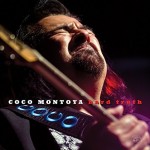



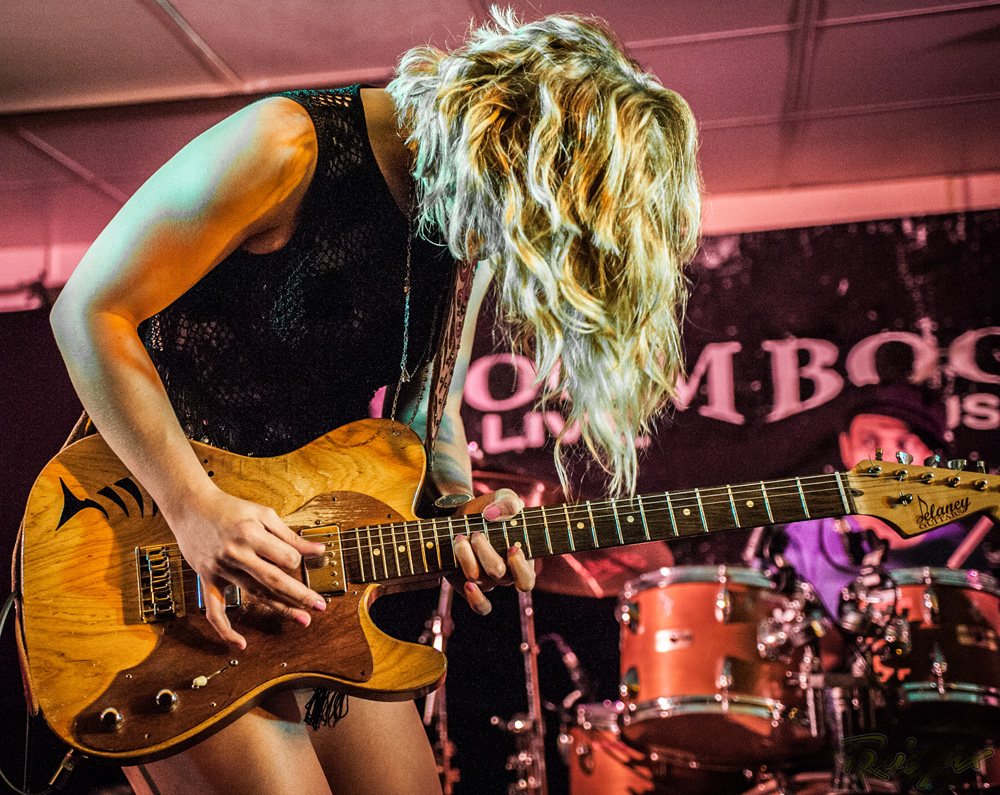


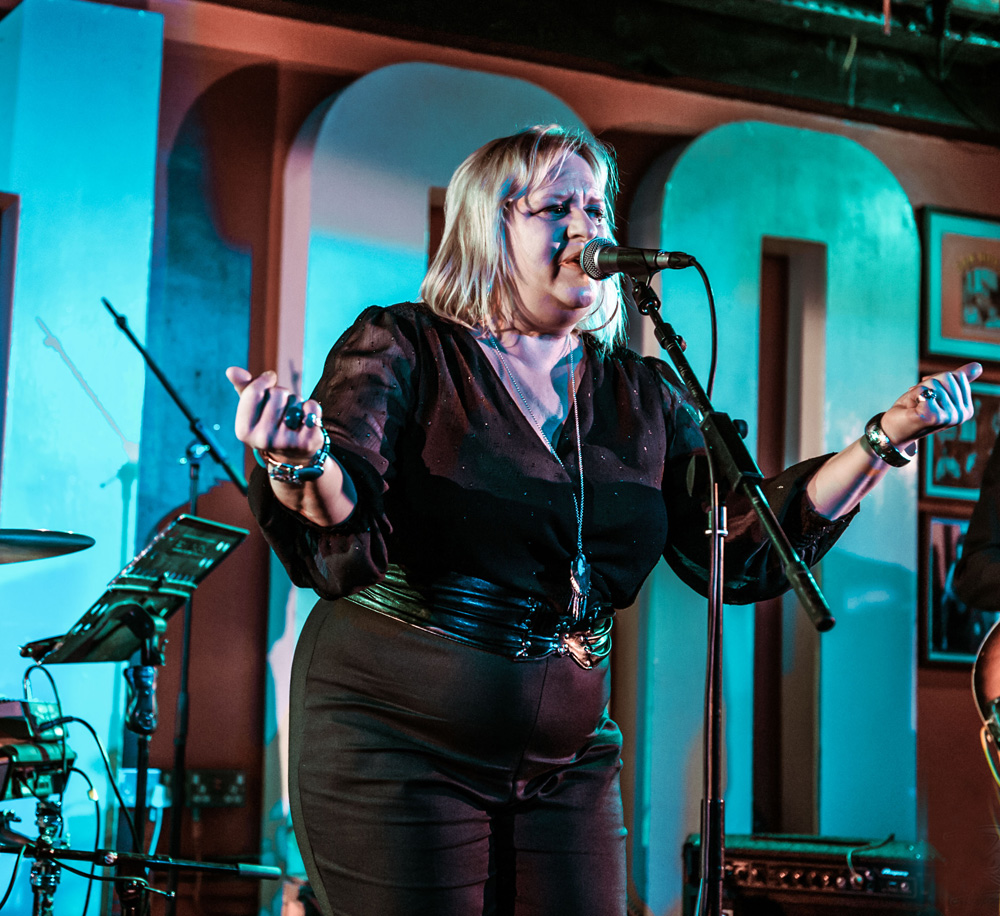


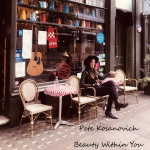







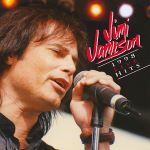




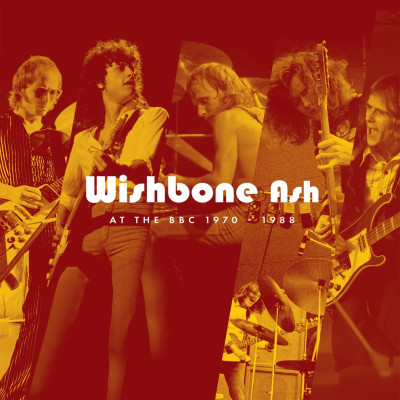









 PDF - you can delete unwanted sections
PDF - you can delete unwanted sections





































